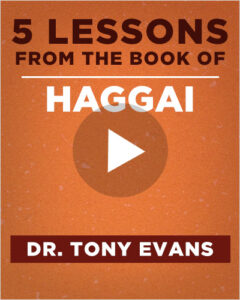The prophet Haggai, about whom we know little except what is recorded in the book of Haggai, lived and ministered during a very low period for the Hebrew people. He wrote at the end of the period of captivity in Babylon, and those who returned to their homeland found the temple in ruins. Though the early preparations for rebuilding it had started, there was little progress being made. Meanwhile, drought had led to poor crops and a struggle for survival.
Despite the sad state of the economy, he believed that rebuilding the temple was of the highest priority.
Into this situation strode the prophet Haggai. He knew that the restoration of the temple was critical for the restoration of the spirit of God’s people. Despite the sad state of the economy, he believed that rebuilding the temple was of the highest priority. It would bring about a restoration of national pride and be the catalyst for spiritual revival. So, with all the challenges God’s people faced, Haggai was calling them to move from apathy to action.
In this short book, only two chapters long, we see Haggai’s vision for the revitalization of his people through an act of faith—overcoming their inertia and spiritual insensitivity by laboring together to try to return the temple to its former greatness. Instead of simply focusing on their own needs of the moment, Haggai called the people to put God’s project first in their hearts.
Instead of simply focusing on their own needs of the moment, Haggai called the people to put God’s project first in their hearts.
This message should be in the hearts of God’s people today. We can see an echo of it in the words of Jesus found in Matthew 6:33: “Seek first His kingdom and His righteousness, and all these things will be added to you.”
Here’s a short video that highlights five key themes from the book of Haggai. May you be blessed by it.








